We all know how good for us (and delicious) it is to eat wholesome, colourful foods. These 12 tips will give actionable guidance to anyone who wants to eat more fruits and vegetables, keeping this change simple, long-term and tasty!
‘Eat more fruits and vegetables’ often appears on many people’s lists of health goals – a fantastic thing to aim for, and one I would always encourage. In fact, whenever someone gets started with healthy eating, it’s likely to be within the first steps they take in the right direction.
You don’t need to be a dietician or nutrition expert to understand the value of adding more colourful foods straight from the earth to your plate. High in vitamins, minerals and fibre, they contain all the stuff needed to nourish your body and help you become your healthiest self. They keep you hydrated and energised throughout the day. Plus, many bring along an abundance of delicious, natural flavours that can enhance any meal – and are just as perfect to eat by themselves!
But HOW do we eat more fruits and vegetables?
In my childhood and teenage years alike, I’ve never had a problem with going above and beyond my five a day. Growing up in Russia, we had our own garden and a plentiful supply of organic and homegrown produce. With not much ‘Westernisation’ going on back then, fast food wasn’t really a thing. My grandma cooked up incredible dishes which often involved anything from potatoes and leafy greens, serving fruit salads for dessert and encouraged me to snack on fresh berries whenever possible.

So yeah, except for a period during my struggle with anorexia when I purposely restricted my fruit and veg intake because their carb content frightened me off (needless to say, I’m glad those days and beliefs are behind me!), getting in my greens has been quite second nature. But the fact is that most people struggle to meet their daily requirements, for a variety of reasons. This may be taste, the time it takes to cook at home, or simply habit. If you’re not used to eating large amounts of fruits and veg, making the leap overnight can prove overwhelming and difficult.
However, long-term change often comes from those tiny initial steps. There are many actionable strategies you can implement now, to then build up your fruit and veg intake over time – and enjoy the process too!
Try out new cooking techniques
You don’t have to sit around munching on carrot and cucumber sticks. There are countless ways to prepare fruits and veggies, bringing out their unique flavours both on their own and your favourite dishes. Honestly, just trying out a new cooking technique makes you realise how versatile and tasty they can be, which is why I can’t go a single meal without at least a few servings (my entire five a day all at once is even better, lol).
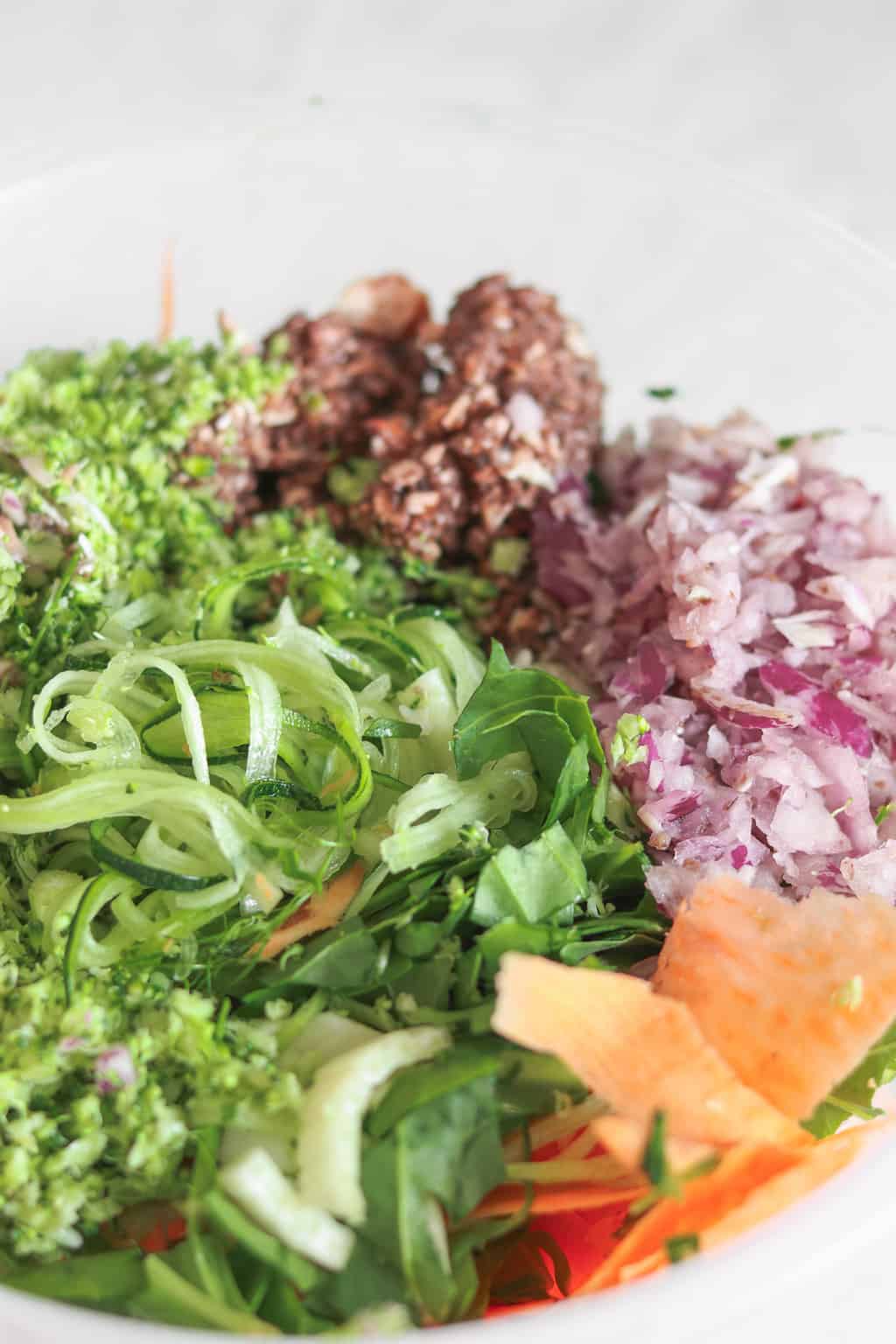
Some things to try are:
- Stir frying. I use the 28cm Scoville Neverstick Frying Pan
for excellent results, even without oil.
- Boiling. Perfect if you want something simple and quick.
- Grilling. I have to admit I’m a bit obsessed with grilled aubegines, zucchini and mushrooms!
- Roasting. Of course, potatoes and other root vegetables are the obvious option. Cut them into wedges or disks, season with your favourite spices, and you’re good to go.
- Blending into a soup – or even a sauce for pasta and noodles.
- Roughly chopping using a food processor. I don’t know why, but automatically makes vegetables taste better.
- Spiralizing. Once again, this can take any salad to the next level.
- Steaming.
Drink them
Smoothies, juices and ‘nicecream’ are a great way to enjoy fruits and vegetables, also making them easier to digest. If you’re not a fan of the taste of raw kale or spinach, you can mask them using ingredients such as banana, mango, superfoods powders, and more. I’m always bulking my green smoothies up using protein powder and/or healthy fats such as avocado and nut butter to make them more filling.
Plus, if green puts you off and chocolate for breakfast is what you’re after, there’s always banana icecream! The basic ingredient is frozen bananas. After that, it’s your turn to get creative with the flavours. Think berries, more superfoods, nut butters, etc.
Nourish bowls
I always talk about my love for nourish bowls and they often pop up on my Instagram feed – not without a good reason. Bowls like this, to me, symbolise nourishment and abundance. If you’re new to plantbased eating, they’re a great way to make sure your meals are nutritionally balanced and bursting with all the colours you can think of.
A nourish bowl can be extravagant, or a ‘throw together everything I have in the fridge’ type of lunch/dinner. The key is using a variety of flavours and textures to keep every bite interesting. Whenever you make one, try out different combinations to see what you like best.
I typically start with a carb base (such as potatoes, rice or pasta), followed by a plantbased protein source and a healthy fat. Next is the fun part – adding at least three servings of veggies, and fruit/berries for extra flavour. Serve with a tasty dressing, and you’re good to go!
Find your favourite dressing
Speaking of dressings, they’re often the key to a good salad, particularly if you have a hard time eating leafy greens like kale and spinach. Of course, don’t overdo it to the extent that your salad becomes 90% dressing and 10% vegetables. Use them as an accessory, to bring along some extra flavour and variety.
Nowadays, many brands sell delicious and often healthy vegan options and alternatives. If you’re not a fan of store-brought, however, making your own is often a simple process. As in, stirring the ingredients in a bowl or whisking them up in a food processor. I love making my own hummus, vinaigrettes and creamy avocado sauces. Sometimes, a squeeze of lime juice or a healthy sprinkle of nutritional yeast is all a salad needs!
Buy your staples in bulk
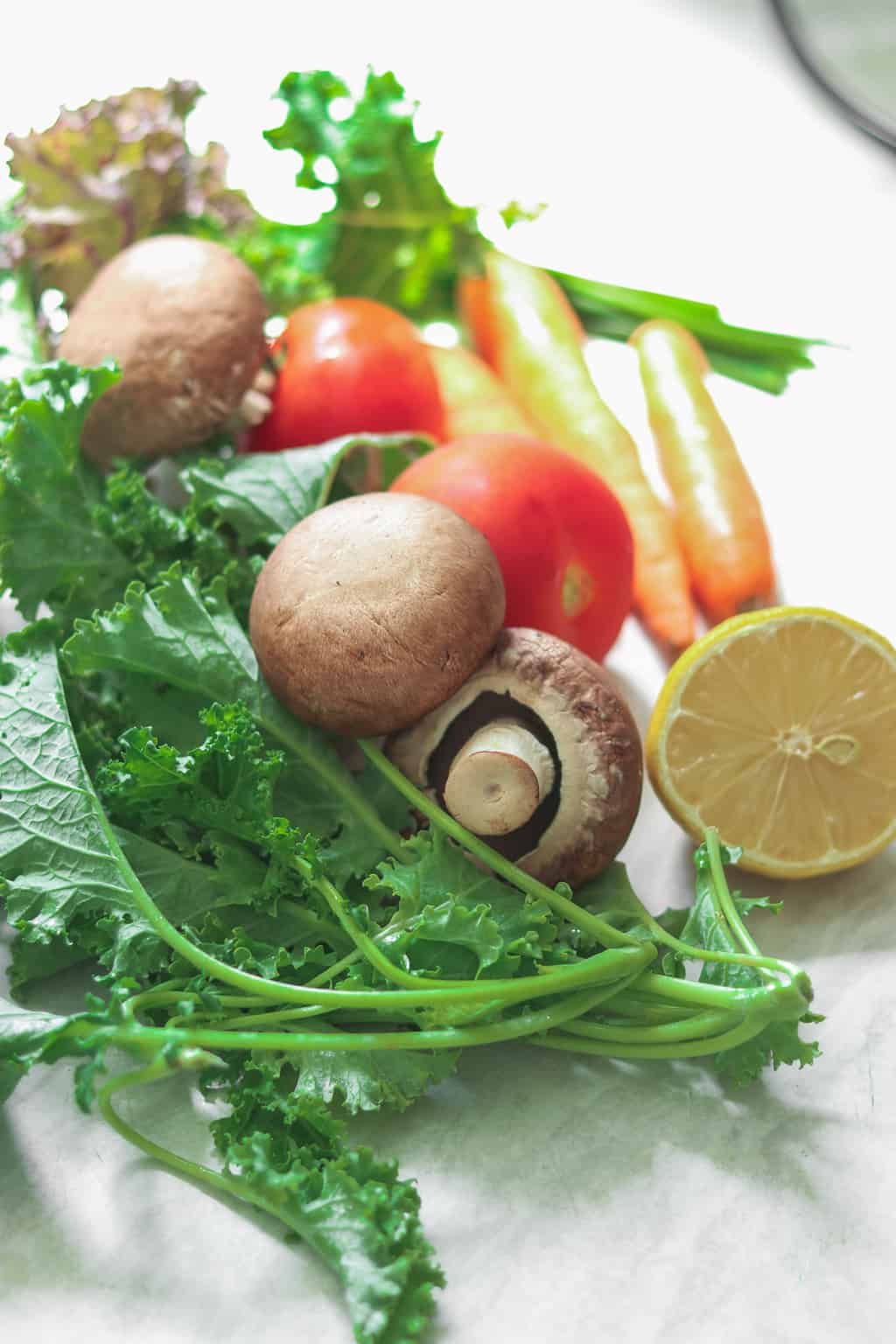
Having a staple grocery list and buying your fruits and veggies in bulk is a great investment of your time. Firstly, you’ll always have plenty of produce on hand to eat and cook with. In other words, you won’t have to run to the grocery store every day to stock up. Plus, once you understand what you need and how much, you can save some money too!
Of course, you have to be mindful of how long the foods will last and whether you’ll be able to eat them all before they go bad. For example, potatoes, carrots and onions sit around for a lot longer than berries and leafy greens. Most weeks, I grocery shop twice: once for things like the former, an an extra one to top up anything that I can’t keep in the fridge/cupboard for the entire week.
Eat seasonal produce
I advocate buying things that are in season, for numerous reasons. Firstly, it tastes much better and more likely to be organic/grown without pesticides. Secondly, have you ever noticed how certain fruits and berries massively go up in price during the winter? Well, by focusing on seasonal produce you can save a lot of money and still get all of the servings of fruits and veggies you need – all while helping the environment and your local community if you buy from farmers markets.
Have a side salad with your main meals
A salad with lunch and dinner is an easy way to eat more fruits and vegetables: just chop up whatever you have in the fridge, drizzle with a dressing of your choice (or just have it plain!) and you’re good to go. Practically no effort and numerous servings delivered at once. If you want to take it a step further, turn your salad into a meal by bulking it up with carbs, proteins and healthy fats.
Meal prep
Meal prepping in general has many benefits. From saving time and money to making sure you always have nourishing meals/snacks on hand, it’s a great habit to bring into your life. Personally, I love collecting delicious recipes throughout the week and spending one or two hours on Sundays making them in bulk! It’s almost starting to feel like self-care.
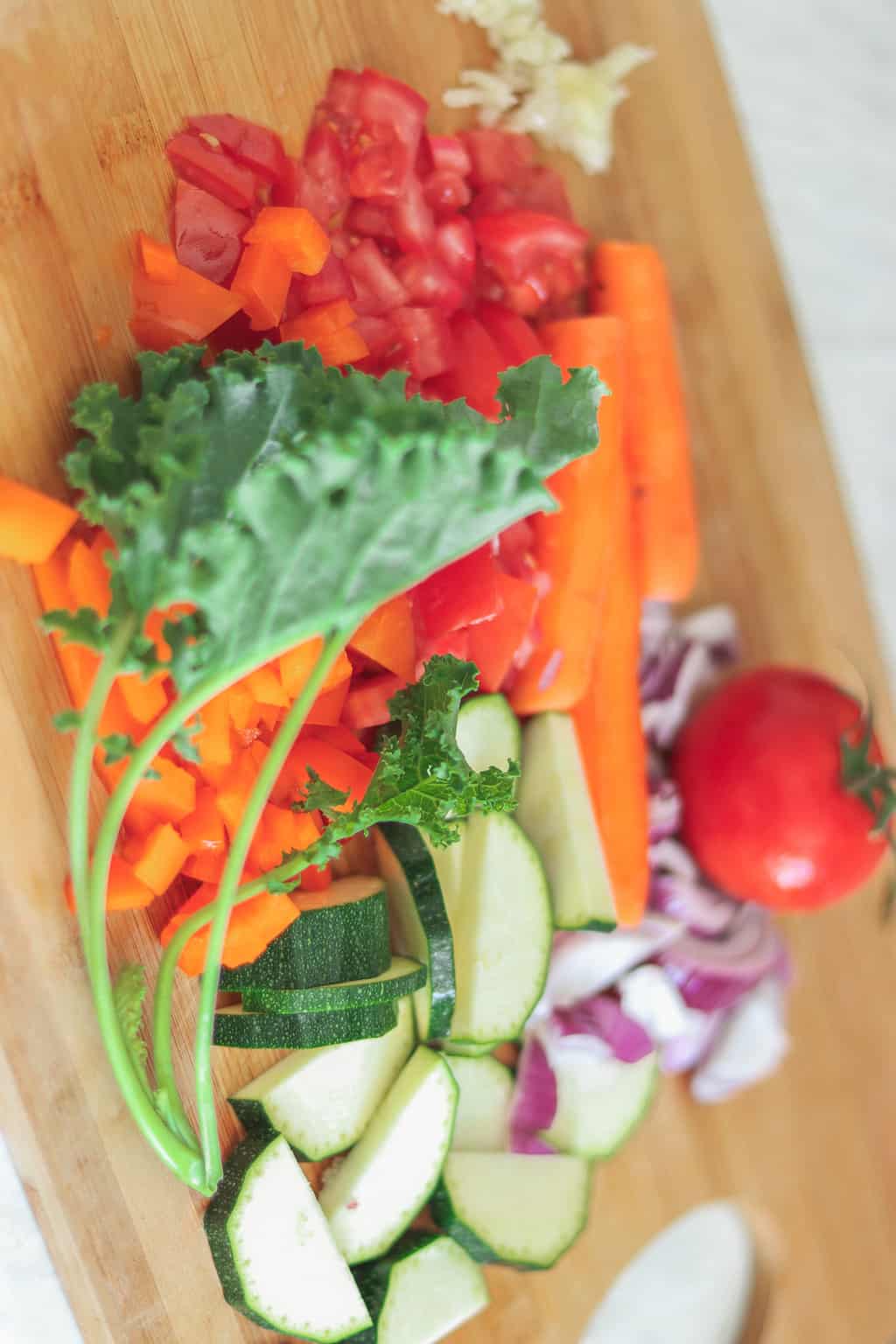
If you struggle with your fruit and veggie intake, plan and cook ahead as much as possible. That could be preparing meals packed full of nourishing ingredients and avoiding the last minute panic of not knowing what to have for lunch. That’s always when panic-buying at the supermarket happens. Alternatively, just chop your veggies in advance! Because I get it, you might wanna leave room for spontaneity in your eating schedule. But chopping drains precious minutes from your day, and it helps to have everything to go when cooking time comes around.
Find inspiration online and in cookbooks
Social media and the internet have their drawbacks. But there’s a lot to love about them, too. For once, where else would we easily find inspiration for everything from home decor to delicious vegan recipes if not for the web?
Making any sort of change to your diet can be overwhelming – even if that goal is to eat more fruits and vegetables. I have to say, when I first went vegan (which automatically meant more colours in my meals), I had no idea what to cook. I threw ingredients together and hoped for the best. That’s when social media came to the rescue. I got practically all my ideas from foodies on Instagram, and research on Pinterest.
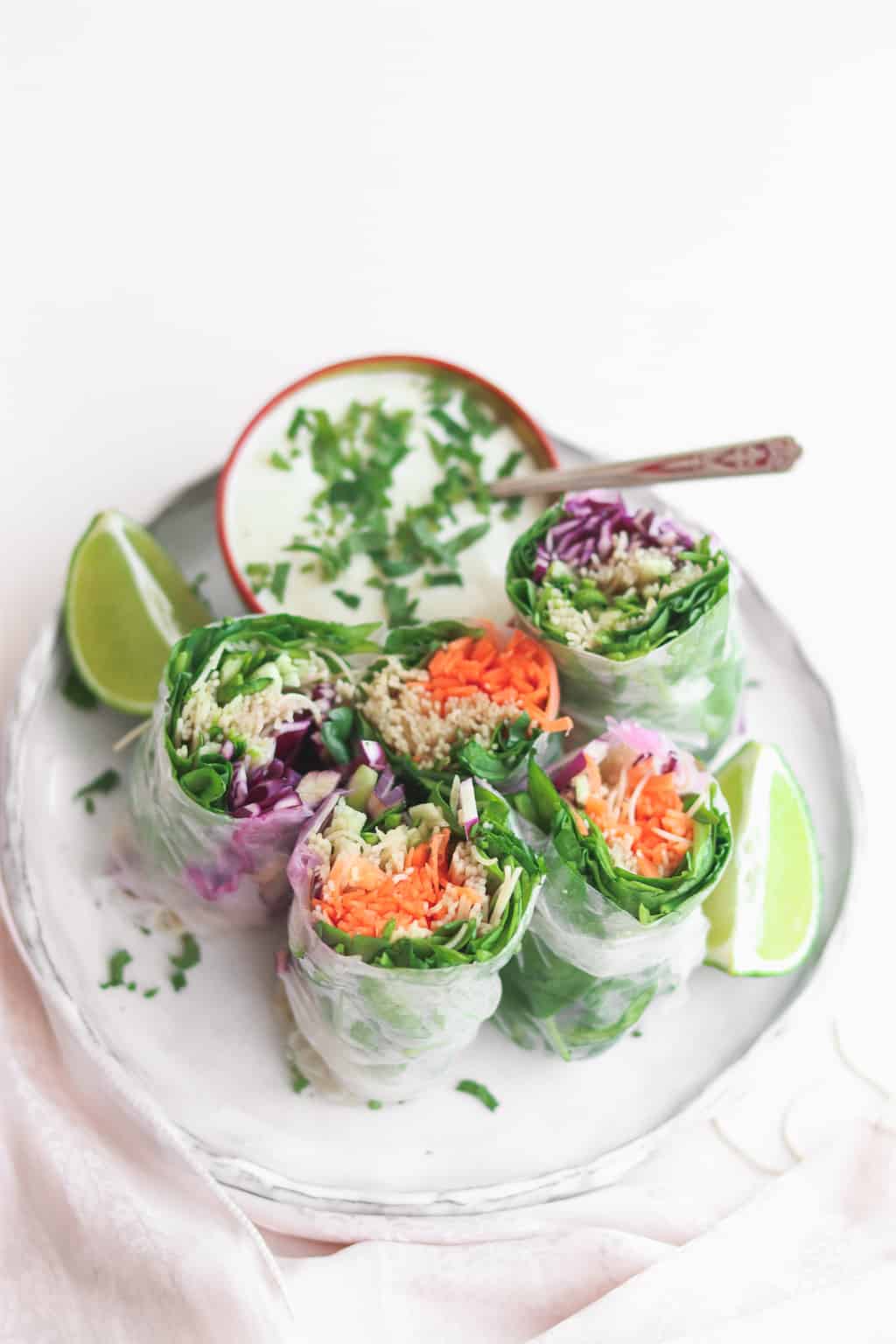
So, bulk up your feeds with accounts you find inspiring. Bookmark and save recipes that catch your eye. And if social media isn’t your thing, a good cookbook is never a bad investment (simply looking at the gorgeous food photos is a treat in itself)!
Look out for new things to try
Don’t let yourself get bored! I mean, that’s pretty hard given the huge variety of options out there – both in terms of the actual fruits and veggies, and what you can do with them. Don’t be afraid to try out something you haven’t seen before. For example, jackfruit seemed odd to me at first, but I’ve learnt just how well it can work in all sorts of recipes. Zucchini in oats is another example. I approached my first attempt with caution, but won’t go back for sure.
Have a list of easy, go-to meals for when creativity goes down your list of priorities, but be sure to switch things up from time to time. Whether that’s trying a new variety of potato or finding a different side salad for lunch, avoid one of the biggest habit-building mistakes: getting bored and losing touch with why you started.
Start your day with fruit
Have a few pieces of fresh fruit with whatever you’re having for breakfast. This is the morning equivalent of a lunch/dinner side salad, and always so delicious! Put some berries on toast, add banana to your oatmeal, make a smoothie or juice, etc. I like to have fruit as a pre-breakfast appetiser because it tastes incredible on its own. Another added benefit is that you (hopefully) won’t need as much caffeine because the natural sugars will keep you energised throughout the morning!
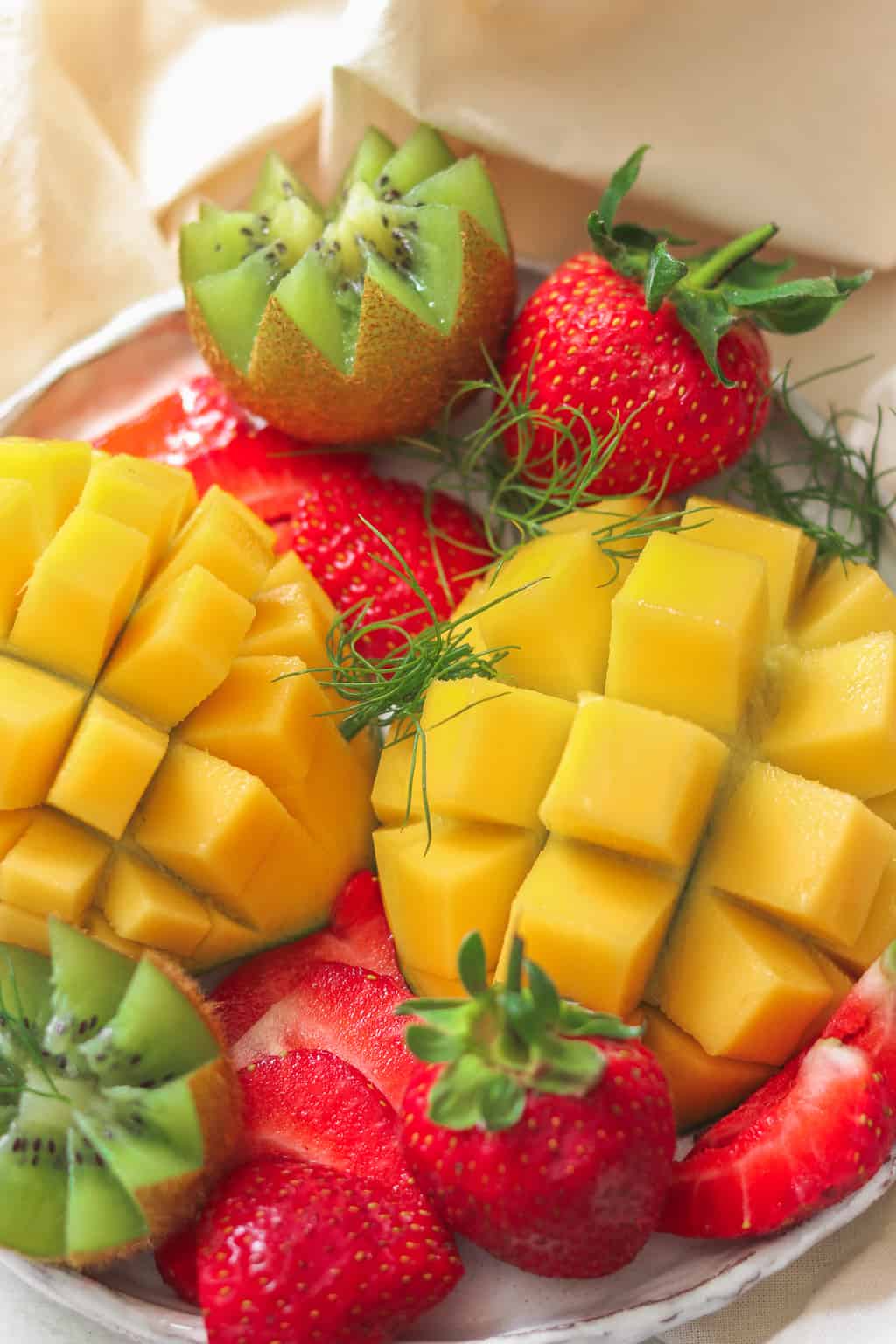
Learn to love the taste
I’ve enjoyed the taste of anything from cabbage to sweet potato and zucchini throughout my whole life. Some people can eat plain vegetables and find it genuinely enjoyable, others find the thought almost unbearable. As I said, if you’re of the latter, you can implement strategies such as constantly trying new recipes and cooking techniques, making tasty dressings, ‘sneaking’ vegetables into your diet, and the like. But also keep in mind that your tastebuds adjust over time! You might think you dislike certain foods, yet come to a different conclusion after trying them a few times. Don’t think you have to sit and eat a kilogram right this second. Start small, and find yourself gradually falling in love with new flavours.
Concluding thoughts
As you can see, these 12 ideas require small tweaks to your habits that all add up to a positive result. Implementing a handful will bring more variety into your diet and help you experience the positive effects of eating fresh, nourishing produce, which makes a key component of an overall healthy lifestyle.


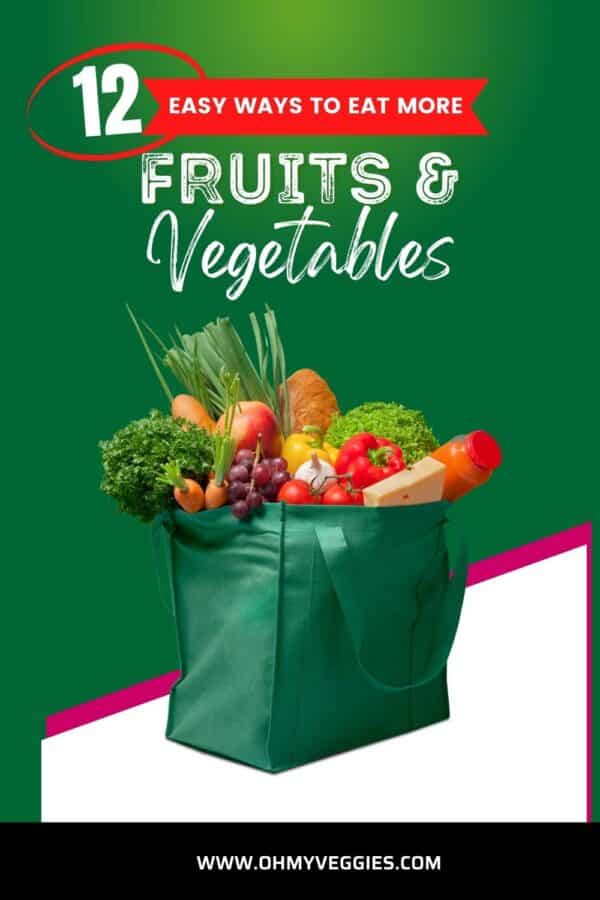
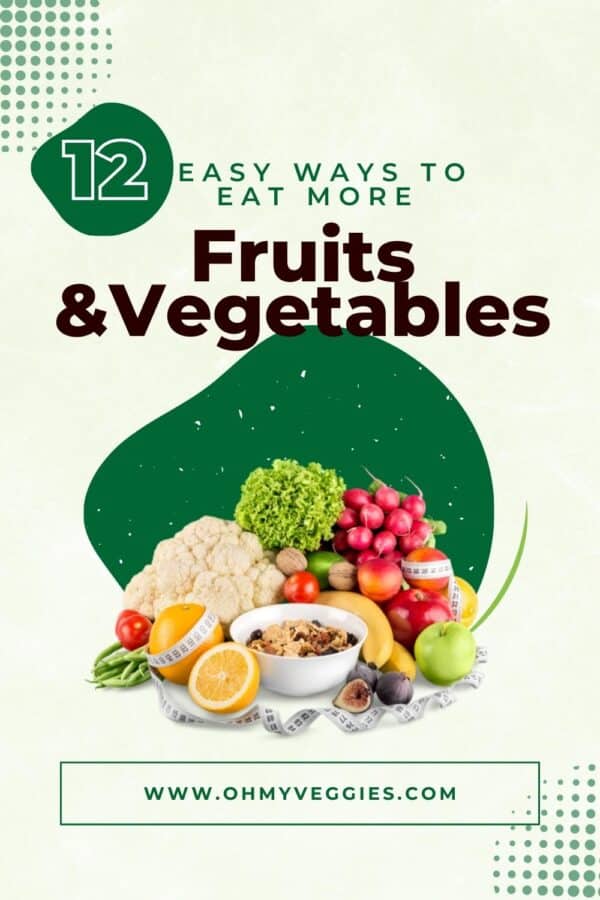
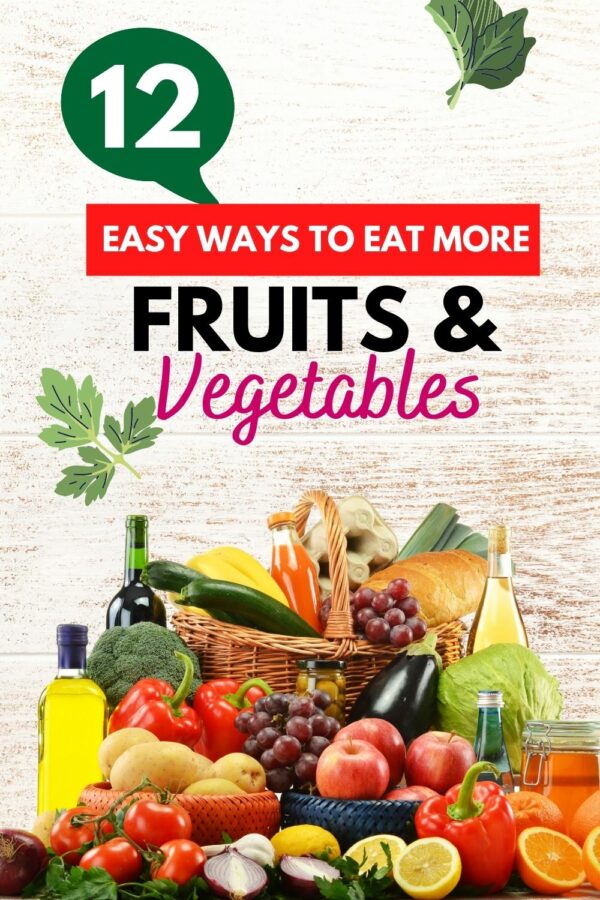
Comments
No Comments